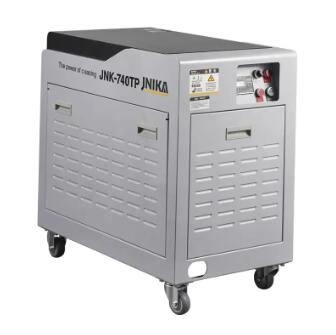The Future of Industrial Dust Control: The Role of Dedusting Fog Making Machines
2024-08-23
In today's industrial landscape, the focus on worker safety, environmental sustainability, and operational efficiency is greater than ever. Dust control is a critical component of this focus, as uncontrolled dust can lead to serious health risks, environmental contamination, and equipment damage. The industry building dedusting fog making machine has emerged as a powerful solution to these challenges. This blog will explore the future of industrial dust control and the evolving role of dedusting fog making machines in shaping safer and more efficient industrial environments.
The Growing Importance of Dust Control
Dust control has always been a concern in industries where materials are processed, transported, or stored. However, with increasing awareness of the health risks associated with dust, along with stricter environmental regulations, the importance of effective dust control has never been higher. Industries are now required to implement robust dust management strategies to protect workers, prevent environmental pollution, and comply with legal standards.
Traditional methods of dust control, such as water spraying or covering materials with tarps, have limitations in terms of effectiveness and coverage. These methods often fail to address the root cause of dust generation, leading to ongoing issues. This is where dedusting fog making machines come into play, offering a more comprehensive and efficient solution.
How Dedusting Fog Making Machines Are Shaping the Future
Dedusting fog making machines are at the forefront of modern dust control technology, offering several advantages that position them as a key tool in the future of industrial operations.
1. Advanced Control Systems: Future iterations of dedusting fog making machines are likely to feature even more advanced control systems, allowing for precise customization of mist density, coverage area, and operational timing. These enhancements will enable industries to fine-tune dust control measures to meet specific needs and conditions.
2. Integration with Smart Technologies: As industrial operations become more connected through the Industrial Internet of Things (IIoT), dedusting fog making machines will likely be integrated into broader smart systems. This integration will allow for real-time monitoring, remote control, and automated adjustments based on environmental conditions, further enhancing their effectiveness.
3. Sustainability and Resource Efficiency: Future designs of these machines will focus on sustainability, with features aimed at reducing water and energy consumption. This will not only make them more environmentally friendly but also lower operational costs, making them an attractive option for industries looking to minimize their environmental footprint.
4. Expanded Applications: As technology advances, dedusting fog making machines will find applications in a wider range of industries. Beyond construction, mining, and cement production, we may see these machines used in agriculture, food processing, and even in urban settings to manage dust from traffic and construction activities.
5. Health and Safety Improvements: The primary goal of dedusting fog making machines is to protect the health and safety of workers. As these machines evolve, they will offer even better protection against respiratory hazards, contributing to healthier work environments. This will be particularly important in industries where workers are exposed to hazardous dust on a daily basis.
Real-World Success Stories
- Urban Construction Projects: In densely populated urban areas, construction projects can generate significant amounts of dust that affect air quality and nearby residents. Dedusting fog making machines have been successfully deployed in such settings to suppress dust, ensuring that construction activities do not negatively impact the surrounding environment.
- Recycling Facilities: Recycling facilities often deal with a wide range of materials, many of which can produce dust when processed. Dedusting fog making machines have proven effective in controlling dust in these environments, improving air quality and worker safety.
Conclusion
The industry building dedusting fog making machine represents a significant step forward in dust control technology. As industries continue to prioritize health, safety, and environmental sustainability, these machines will play an increasingly important role in shaping the future of industrial operations. With advancements in control systems, smart technology integration, and sustainability, the future of dedusting fog making machines looks promising, offering enhanced dust control solutions for a wide range of industries.



